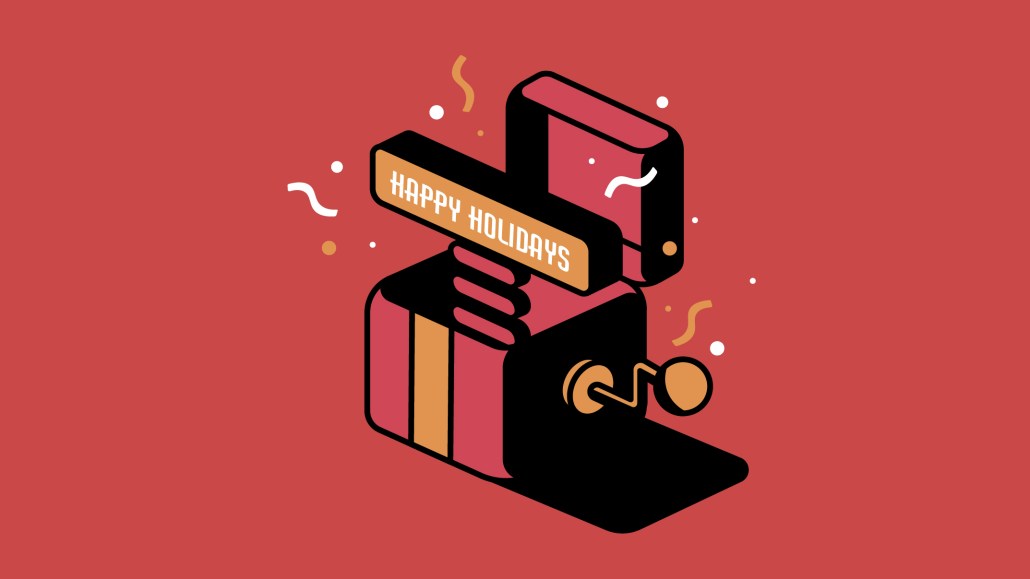In the face of an economic downturn, marketers and agency executives see OOH as a safe bet. So it’s no surprise going into the fourth quarter that they will likely add more out of home advertising to their marketing mix. Marketers and advertisers are pushing hard to capitalize on the opportunities available with Christmas and Black Friday expected to operate at full force this year, following a period of booming shopping and travel activity.
“Out-of-home advertising provides the ability to tailor a local message given how and where you can buy around a certain community or a certain message you want to do and I think it also allows you to really use it as a creative canvas for storytelling,” Todd Kaplan, chief marketing officer of Pepsi, said at Advertising Week last week.
Keisha Andrews, vp and head of media at omnichannel advertising partner Anagram, said an increase in in-store holiday shopping will give advertisers the opportunity to connect with consumers through outdoor and digital signage. “This shift gives advertisers a greater opportunity to capture shoppers’ attention en route to retailers or in-store via OOH and digital OOH placements,” she said.
U.S. advertisers are expected to spend $8 billion on outdoor advertising in 2022, according to a study by Insider Intelligence. And with digital displays popping up in more strategic locations across the country, marketers will have to diversify their plans to come up with a compelling strategy that incorporates both digital OOH and non-digital OOH displays.
“With consumers feeling the effects of inflation and focusing more on value this year, we expect to see advertisers using value-based messaging in their holiday OOH efforts,” said Norm Chait, senior director of OOH Practice Lead at omnichannel marketing platform Quotient. “At the same time, because of higher input costs for brands, they are being careful about production forecasting, which creates the potential for out-of-stocks if holiday demand outpaces supply.”
Advertising budgets could be affected by the looming recession, but OOH spending has been on an upward trend. In fact, OOH logged $8 billion in spending in 2020 compared to $6 billion in 2019, according to the Out of Home Advertising Association of America.
“With consumers continuing to engage in more activities outside the home, one would imagine that spend in OOH would continue to rise to meet its restored audience,” said Joseph McConellogue, associate partner of performance digital at brand strategy and design agency VSA Partners. “But, with fears of a recession come tightening budgets, and oftentimes branding-focused media tactics like OOH are the first to go if budgets are pulled and time will tell what is on tap for OOH this holiday period.”
Advertisers like women’s health care brand Tia, productivity app Notion and baby care brand Coterie have contributed to this trend, and recently made OOH a bigger part of their media mix. And as consumers return to in-person shopping and traveling this holiday season, those brands won’t be alone in doing so.
In 2020, OOH ad spending plummeting by 29%, according to OAAA. But spending in Q4 2021 was up 37.4% year over year, including a 49.6% increase in digital OOH. Overall, 2021 saw digital OOH spend rise 22.7%. This holiday season, advertisers’ and marketers’ spending will hopefully reach pre-pandemic levels.
“We do anticipate that marketers will allocate more dollars within their budgets to OOH in Q4 ’22 compared with Q4 ’21, even if their overall budgets do not change or even decrease,” Andrews said.
The goal of spending on OOH advertising during the holiday season is to gain visibility where shoppers are out and about at lifestyle centers, entertainment venues, restaurants and driving on congested freeways. And digital OOH in particular has the advantage of allowing marketers to change content in real-time, according to Inside Network.
For instance, as marketers lean into OOH, specifically digital OOH, there are many ways in which retailers can promote Black Friday messaging, and then change that messaging the following day, which may make digital OOH more appealing this year. To Kevin Bartanian, advertising expert and founder and CEO of OOH media sales company Kevani, the best OOH strategy is one that combines both traditional OOH and digital OOH.
“If those are my dollars to spend, I’d be starting with a broader objective and then looking at where my audiences are spending their time and the smart marketers understand that the mix is still what’s most imperative in order to reach your campaign objectives,” said Christa Carone, President of Infillion Media, a digital advertising company.
At this point, 55% of consumers are excited about holiday shopping, according to a survey by McKinsey & Company. To offset inflation and supply concerns, 56% began holiday shopping in October. Gen Zers and millennials are more eager to travel to see family and friends this year compared with last year. And 40% of survey respondents said they intend to spend on themselves or others, with Gen Z and millennials leading this category.
“OOH is an agile channel for marketers to pivot their messaging dynamically as these scenarios arise,” said Chait. “Advertisers and agencies see the value of having this flexibility and have learned how to leverage it, and that’s why we continue to see OOH investment trending upward.”
More in Marketing

Pitch deck: How Amazon is recasting Twitch as a core part of its CTV pitch
Amazon is positioning Twitch as a defining asset in its CTV ambitions.

Netflix transforms former mall department stores into experiential venues
The location in Dallas opens this week, and one at the King of Prussia mall near Philadelphia opened last month.

Future of Marketing Briefing: AI has created a new talent paradox in programmatic agencies
The job isn’t execution anymore. AI handles that. The job is judgement.






